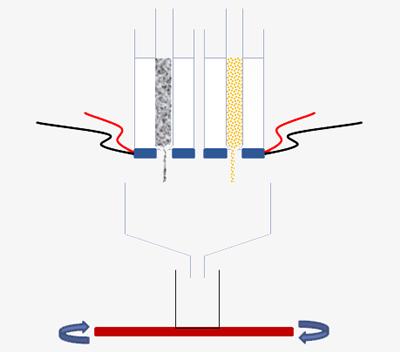Lisa Blair, Jordan Chant, Zongqi Li, Simon Coles, Shoufeng Yang and Ian Sinclair
Background
The way in which materials are mixed can have dramatic effects on the properties of the final product. Taking pyrotechnics as an example, it is important to know that each of the products will ignite and the reaction will propagate in exactly the same controlled and predictable manner. Therefore, it is very important that the materials are mixed in the same way each time. In pharmaceuticals it is imperative that the active pharmaceutical ingredient is evenly distributed through the tablet product. This is important such that if the patient takes half a tablet, they receive half of the dose of the active pharmaceutical ingredient.
A mixing technique has been developed by Dr. Shoufeng Yang, from the University of Southampton, to produce repeatable homogeneous mixtures, and during this project a route was established to quantitatively assess the distribution of individual components within a mixture.
Role of Computed Tomography
The custom 225kV Nikon/Metris HMX ST CT scanner at the μ-VIS centre enabled the characterisation of a number of powder mixtures. The images produced, using CT, are required as the input for a number of tessellation tools. Tessellation in this context refers to the complete filling of a given space. Here regions are grown from a particle such that a cell is defined for each particle. Any point within a given cell is closer to the particle, from which it originates, than to any other particle. The technique of tessellation is used in order to determine the number of near neighbours a particle has and the related distances separating these particles, thus giving a means by which to describe their distribution in terms of its homogeneity.


